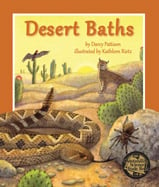Alignment to Standards for TX

| Grade | Number | Standard |
|---|---|---|
| 1 | 111.13 (1.8) | understands that time can be measured. uses time to describe and compare situations. |
| 1 | 111.13 (1.8) (B) | is expected to read time to the hour and half-hour using analog and digital clocks. |
| 1 | 112.12 (b) (10) | organisms resemble their parents and have structures and processes that help them survive within their environments. |
| 1 | 112.12 (b) (10) (A) | external characteristics of an animal are related to where it lives, how it moves, and what it eats |
| 1 | 112.12 (b) (8) | the natural world includes the air around us and objects in the sky. |
| 1 | 112.12 (b) (8) (C) | identify characteristics of the seasons of the year and day and night |
| 1 | 112.12 (b) (9) | the living environment is composed of relationships between organisms and the life cycles that occur. |
| 1 | 112.12 (b) (9) (C) | interdependence among living organisms such as energy transfer through food chains and animals using plants for shelter. |
| 1 | 113.3. (1.3) | The student understands the concepts of time and chronology. |
| 1 | 113.3. (1.5) | The student understands the purpose of maps and globes. |
| 1 | 113.3. (1.6) (A) | physical characteristics of places such as landforms, bodies of water, natural resources, and weather; |
| 2 | 112.13. (b) (10) (A) | compare how the physical characteristics and behaviors of animals help them meet their basic needs such as fins help fish move and balance in the water |
| 2 | 112.13. (b) (8) | there are recognizable patterns in the natural world and among objects in the sky. |
| 2 | 113.4. (2.5) | uses simple geographic tools such as maps, globes, and photographs. |
| 2 | 113.4. (2.5) (A) | use symbols, find locations, and determine directions on maps and globes; and |
| 2 | 113.4. (2.6) | locations and characteristics of places and regions. |
| 3 | 111.15 (3.12) | reads and writes time and measures temperature in degrees Fahrenheit to solve problems. |
| 3 | 111.15 (3.12) (B) | is expected to tell and write time shown on analog and digital clocks. |
| 3 | 112.14. (b) (10) | organisms undergo similar life processes and have structures that help them survive within their environments. |
| 3 | 112.14. (b) (10) (A) | explore how structures and functions of plants and animals allow them to survive in a particular environment |
| 3 | 112.14. (b) (8) | The student knows there are recognizable patterns in the natural world and among objects in the sky. |
| 3 | 112.14. (b) (9) | organisms have characteristics that help them survive and can describe patterns, cycles, systems, and relationships within the environments. |
| 3 | 112.14. (b) (9) (A) | physical characteristics of environments and how they support populations and communities within an ecosystem |
| 3 | 113.5. (3.5) | The student understands the concepts of location, distance, and direction on maps and globes. |
| 3 | 113.5. (3.5) (A) | use cardinal and intermediate directions to locate places such as the Amazon River, Himalayan Mountains, and Washington D.C. on maps and globes; |
| 4 | 112.15. (b) (10) | organisms undergo similar life processes and have structures that help them survive within their environment. |
| 4 | 112.15. (b) (10) (A) | explore how adaptations enable organisms to survive in their environment such as comparing birds beaks and leaves on plants |
| 4 | 112.15. (b) (8) (C) | collect and analyze data to identify sequences and predict patterns of change in shadows, tides, seasons, and the observable appearance of the Moon over time. |
| 5 | 112.16. (b) (10) | organisms undergo similar life processes and have structures that help them survive within their environments. |
| 5 | 112.16. (b) (8) | there are recognizable patterns in the natural world and among the Sun, Earth, and Moon system. |
| 5 | 112.16. (b) (8) (A) | differentiate between weather and climate |
| K | 112.11 (b) (10) | organisms resemble their parents and have structures and processes that help them survive within their environments. |
| K | 112.11 (b) (3) (B) | make predictions based on observable patterns in nature such as the shapes of leaves |
| K | 112.11 (b) (8) | there are recognizable patterns in the natural world and among objects in the sky. |
| K | 112.11 (b) (8) (B) | identify events that have repeating patterns, including seasons of the year and day and night |
| K | 112.11 (b) (8) (C) | observe, describe, and illustrate objects in the sky such as the clouds, Moon, and stars, including the Sun. |
| K | 113.2. (K.16) (B) | create and interpret visuals including pictures and maps. |
| K | 113.2. (K.5) (A) | identify the physical characteristics of places such as landforms, bodies of water, natural resources, and weather; and |
| PK | PK.2. (C) | begins to recognize patterns in their environment (e.g., day follows night, repeated phrases in storybooks, patterns in carpeting or clothing) |
| PK | PK.2. (H) | uses patterns (such as growth and day following night to predict what happens next) |